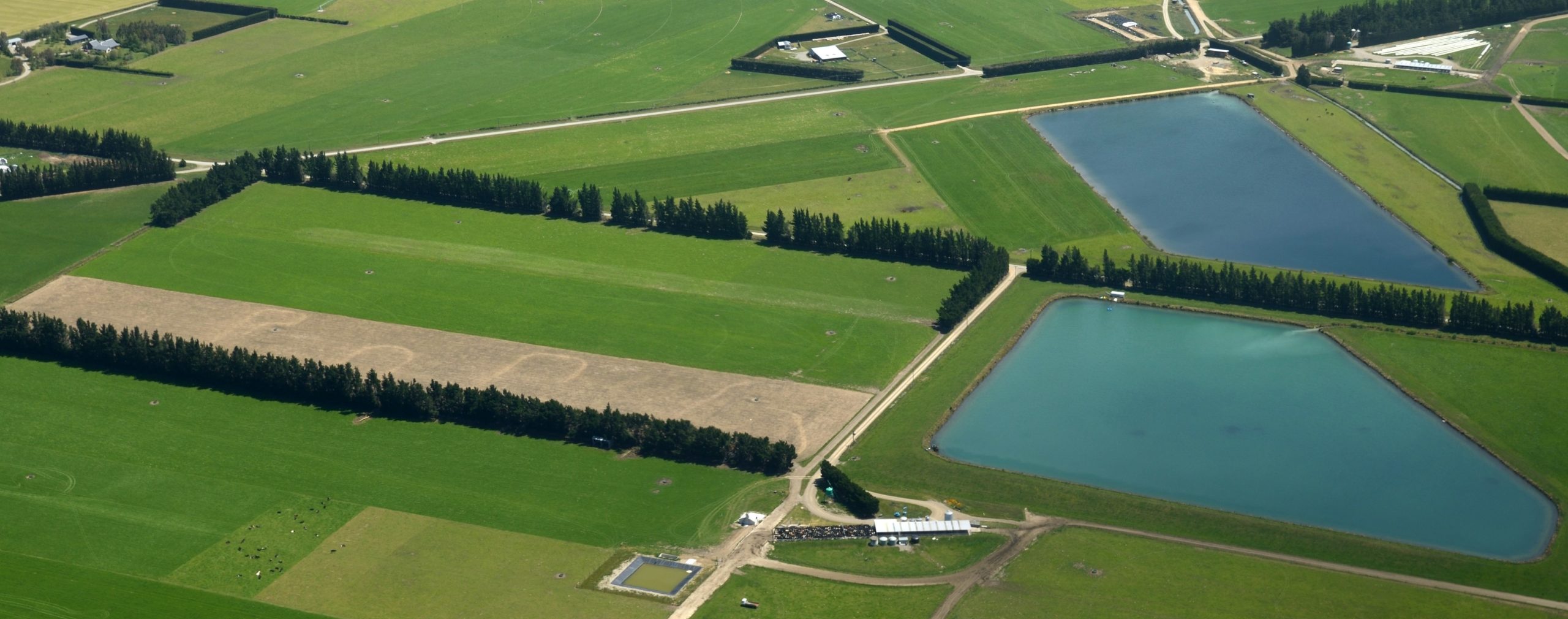In this article, we discuss proposed changes to the Disputes Tribunal that may significantly impact how mid-value disputes are resolved — including a potential increase to its jurisdiction and what that could mean for access to justice.
Freshwater Farm Plans
The Resource Management (Freshwater Farm Plans) Regulations 2023 come into force on 1 August 2023. Farm Operators (someone who has ultimate responsibility for the farm operation) will need to create and follow a Freshwater Farm Plan (“Plan”) to help improve waterways and be in a better position to control the adverse effects of farming on freshwater. The Plan is to help manage risks to freshwater from contaminants such as nitrogen, phosphorous, sediment and E.coli.

Sections 217A to 217M of the Resource Management Act 1991 (“RMA”) also outline the requirements for a Plan to improve waterways. Waikato and Southland will be the first regions required to give effect to these new provisions.
These Plans are different from a Farm Environment Plan. However, the two plans may be linked together to avoid the need to undertake multiple plans. Ideally it will be beneficial for both farmers and councils if there is one plan which covers all environmental matters.[1]
Who needs one?
All farms with:
- 20 hectares or more in arable or pastoral use; or
- 5 hectares or more in horticultural use; or
- 20 hectares or more of combined use; or
- An area of the farm is for another agricultural land use prescribed in regulations made under section 217M(1)(b) of the RMA.
The Plan applies to the whole farm.
What is required in the Plan?
The Plan will need to meet and include the following information (including physical actions) such as:
- Administrative information (such as contact details, legal titles of the farm, total farm area, lease or licensed area of the farm, details of any current resource consents held in respect of the farm relevant to freshwater farm plan)
- Mapping, identifying and describing each land unit (an area of land with similar biophysical features) on the farm;
- Identifying and mapping risks to freshwater and the impact of these risks for each land unit;
- An outline of how existing and/or new actions will be taken to avoid, remedy, or mitigate the risks to freshwater identified;
- Set time frames for when each action will be implemented;
- An action plan which includes a list of the actions and timeframes each action will be implemented;
- How it meets the National Environmental Standards for Freshwater, the local authority plans, and any resource consent conditions (if the farming activity requires a resource consent); and
- How water quality issues for the catchment area will be addressed.
Mapping
The Plan must include maps that show the following:
- Farm boundaries (noting any land that is leased or licensed);
- Areas of land use;
- Location of land units;
- Surface and artificial freshwater bodies;
- Soils;
- Landforms;
- Potential areas of intensive winter grazing and critical sources areas within areas of intensive winter grazing;
- Critical source areas that are not within areas of intensive winter grazing;
- Drainage systems and areas;
- Irrigation and frost protection;
- Fencing to exclude stock from freshwater bodies (please see our previous article on the new stock exclusion regulations -www.harknesshenry.co.nz/2020/11/16/to-fence-or-not-to-fence-the-new-stock-exclusion-regulations/);
- Planted riparian areas;
- Soil erosion control plantings or works;
- Effluent systems;
- Water-take bores and surface water abstraction points;
- Freshwater crossings, including bridges, culverts, fords and unformed crossings;
- Stock-holding areas, including feedpads, winter pads, stand-off pads and loafing pads and stockyards;
- Other stock-related infrastructure (including milking sheds, wintering barns, shelters and stock yards);
- Farm accessways;
- Point source discharges including:
- Rubbish dumps, offal pits and silage pits
- Feed storage bunkers or sheds
- Agrichemical, fertiliser and fuel storage sites
- Agrichemical washdown areas
- Private drinking water supply points; and
- Any new physical works to be undertaken on the farm as set out in the action plan.
Action Plan
An action plan must be provided with the Plan, which sets out what actions will be taken to avoid, remedy or mitigate adverse effects of farming activities on freshwater. The action plan must contain the following information:
- Whether it is an existing action that is already being carried out or a new action that is intended to be carried out in the next 5 years;
- Describe how each action relates to the identified risk that the action is intended to address;
- Describe the land units in which each action is to occur;
- Categorise each action as catchment, regulated or supplementary actions; and
- State a time frame within which each must be implemented.
When will the Plan need to be submitted?
A Farm Operator must submit the Plan to a qualified certifier nominated by a regional council within 18 months after the later of:
- The date specified by the Governor-General for a district; and
- The date which the farm meets the land use/size threshold as noted above.
Certification of the Plan
The Plan must be certified by a person appointed by a regional council. The certifier must provide a draft decision and decision report to the Farm Operator within 30 working days after the Plan is submitted for certification (further information can be requested along the way).
Farm Operators must amend the Plan and resubmit it to a certifier for recertification every 5 years, or 12 months if there are significant changes.
If a Farm Operator disagrees with the certifier’s draft decision or assessment report, comments in writing must be made within 10 working days of receiving the draft decision and assessment report. The certifier will have 5 working days to consider these comments and produce a ‘preliminary decision or assessment’. If the Farm Operator does not agree with this decision/assessment, the Farm Operator needs to note its disagreement and engage a second certifier. Comments can be sent to the second certifier and then there is a final decision.
Regional council must only appoint a certifier who meets the following criteria:
- The certifier must demonstrate an understanding of competencies for certifiers; and
- Have a qualification in natural resource management or farm system management; or
- Have at least 3 years experience in a field related to the competencies of certifiers.
The certifier must have successfully completed training in the catchment context as required by regional council, and if required, must undergo a practical assessment to demonstrate their understanding.
Regional council must maintain a list of certifiers appointed on their website.
A complaint may be brought against a certifier for a failure to meet the necessary requirements for appointment or because of a failure to meet professional performance standards. The final decision to discontinue the appointment of a certifier lies with regional council.
How will the Plan be regulated?
Throughout the course of the Plan’s ‘life’, it will be audited to ensure that any actions or requirements in the Plan are being followed.
An initial audit of the Plan will be carried out within 12 months after the initial certification of the Plan. The auditor’s report on the Plan will assign an audit grade and outline why the farm receives a particular audit grade. A Farm Operator must arrange subsequent audits of the Plan based on that audit grade which assigns a timeframe for when the next audit is required. For example, an “A Grade” will mean that another audit will be required in 3 years (the shortest period for a another audit is 6 months).
A Farm Operator who takes over a farm and adopts the existing Plan of the previous operator must arrange for an auditor to audit the farm for compliance with the Plan within 12 months. A new operator will not be responsible for any failure of the former operator to implement the actions, arrange certification or arranging an audit of the Plan.
A copy of the audit report must be provided to the Farm Operator within 20 working days of the auditor being engaged. If the Plan is audited and fails, the auditor’s report must outline the reasons why the farm failed to achieve compliance, the timeframes for compliance to be achieved, and any recommendations of how compliance may be achieved. The Farm Operator will have a reasonable opportunity to respond to the report and the auditor will then provide the regional council with a final report. If actions or requirements are not being met, a regional council can pursue compliance.
Auditors will be appointed by a regional council subject to meeting the following criteria:
- Be a member of a professional audit body; or
- Have 3 years of relevant experience; and
- Successfully completed training in the catchment context.
Regional council must maintain a list of auditors on their website.
A complaint may be brought against an auditor for failure to meet the necessary requirements for appointment, or because of a failure to uphold professional performance standards. The final decision to discontinue the appoint of an auditor lies with regional council.
Records
Certifiers and auditors are to keep information for 7 years.
Regional council must keep and maintain a record of the following information:
- A certified Plan, the date it was certified, the date the farm was last audited for compliance with the Plan;
- Audit reports;
- A map of the special extent of the farm at the time of certification;
- Records of any complaints made about a certifier or auditor;
- Details of actions taken as a result of the complaints;
- Contact information of certifiers and auditors;
- Documentation in relation to the appointment process of applicants seeking to be certifiers or auditors;
- Training records of certifiers and auditors appointed; and
- Dates and outcomes of performance reviews of certifiers and auditors.
Costs
The Farm Operator is expected to pay for the Plan, the certifier and the auditor.
Penalties
Failure to comply with the Regulations (whether that be not providing a Plan to a Certifier, not implementing actions etc) will result in an infringement fee of $1,500 per offence.
Integrated National Farm Data Platform
Te Uru Kahika (Regional and Unitary Councils Aotearoa) with the Ministry for the Environment and Ministry for Primary Industries is developing a database to standardise data and reporting for the Plans. The database will be used by the certifiers and auditors, regional councils, and the Ministry for the Environment. This platform is intended to be live by mid-2024.
This article is current as at the date of publication and is only intended to provide general comments about the law. Harkness Henry accepts no responsibility for reliance by any person or organisation on the content of the article. Please contact the author of the article if you require specific advice about how the law applies to you.
For further information



